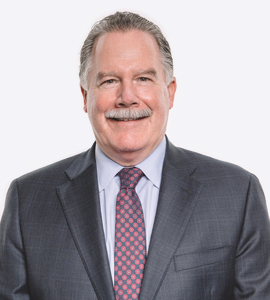About thirty years ago, I was an accountant for Arthur Young. One of my auditing clients was a young emergency physician group in Oakland. I remember working long hours and coming home late at night exhausted, watching Johnny Carson on The Tonight Show, and thinking about that physician group and its amazing culture. They were devoted to helping others, and they went about their business in such a positive way.
When I decided to jump ship to truly join the healthcare sector, I went to work for that young physician group. At the time, many of my colleagues were going to high profile jobs in the financial services industry and investment banking. But I think I made the best choice.
Working in healthcare has never been dull. I’m constantly learning, and it’s been satisfying to know I’ve been working for something that really matters. I’ve been at that same physician management company for thirty years, and it has felt like an entrepreneurial experience. In fact with the evolution of healthcare over that period, I’ve been able to start many new companies and service lines including a billing company, an insurance company, and a benefits company. In the late 90s we even looked into taking the management company public (but thankfully did not and I got to watch the dot com bubble crash mostly from the sidelines).
All of the changes in my business were in response to the changes in the broader industry. And now I can honestly say that I can’t fathom what the healthcare sector will look like thirty years from now – especially when I compare it to how much has changed since I left Arthur Young (now part of Ernst & Young).
No one could have anticipated the innovations that we take for granted today. Think of the evolution of computers and the Internet; the spread of cell phones and then smart phones; the digitization of information and the instant crunching and communication of data. If things continue to change at this rate, I can’t imagine what the world will be like in thirty years.
But I can visualize some of what healthcare may look like in ten years. Over the past ten years, the scope of management support needed by healthcare providers to do their jobs caring for patients has drastically increased. At the same time, many in the management industry have been able to provide more service for the same healthcare dollar – relying on technology and an increasingly innovative workforce to design new and more efficient solutions.
I believe we can expect these trends to continue. Ten years from now, we will see both increased consolidation and widened dissemination of health care delivery, with more large multi-service groups, and more outreach into currently underserved areas through wireless healthcare connectivity. The efficiencies of integration will make a huge difference for both patients and the bottom line of the hospital.
Wireless technology and big data present major opportunities for the Acute Care Continuum. Information Week recently predicted that the use of big data analytics in healthcare is at a tipping point, and this will only benefit the speed and efficiency with which patients move through the hospital. Medical care as a whole will be better coordinated and integrated, from intake to discharge. Reimbursement will be a closely watched and changing subject. New healthcare configurations will proliferate, such as Accountable Care Organizations (ACOs) where providers are paid on the basis of quality and cost metrics – which we are now able to measure quickly and accurately.
Data capture and analysis is one of the most important competencies for any practice management organization. Near real-time analytics for performance, quality, and reimbursement are becoming available, and will proliferate over the next ten years. This is a key part of the accountability for physicians and hospitals to their patients – without the data, you don’t know how well you’re doing.
On the demand side, CMS will likely transition from posting data that is one year old to data that is one month old, or maybe even real time. Patients will have accurate and up-to-date information that allows them to make a choice about quality and performance, significantly changing the dynamics of the healthcare economy.
Another example of technology having the potential to make a significant change in patient care is a March 15 study in Journal Watch Emergency Medicine that showed a quarter of patients undergo a repeated CT scan soon after transfer to a new facility. Why? Nearly half of the time it was because the data from the scan couldn’t fit on a CD-ROM, and so couldn’t be transferred to the new doctors at the new hospital. This is surprising in this day and age, and I am sure technology will quickly catch up to solve it.
Well, time to put away the crystal ball.
Today, when I finish up at the office and go home, I won’t be watching Johnny Carson. I’ll be choosing from a wide range of options like Jimmy Fallon, Sports Center, or even video content easily streaming over the Internet. I see today’s plethora of television choices as a parallel to where healthcare will be in ten years. The increase of available data on quality, performance, and cost of healthcare will create an industry that does a much better job of meeting the needs of individual patients.
So much has changed over 30 years, but what has not changed since I first joined Vituity is the pride I take in being able to say, “We do good work for people who do good work.”






















